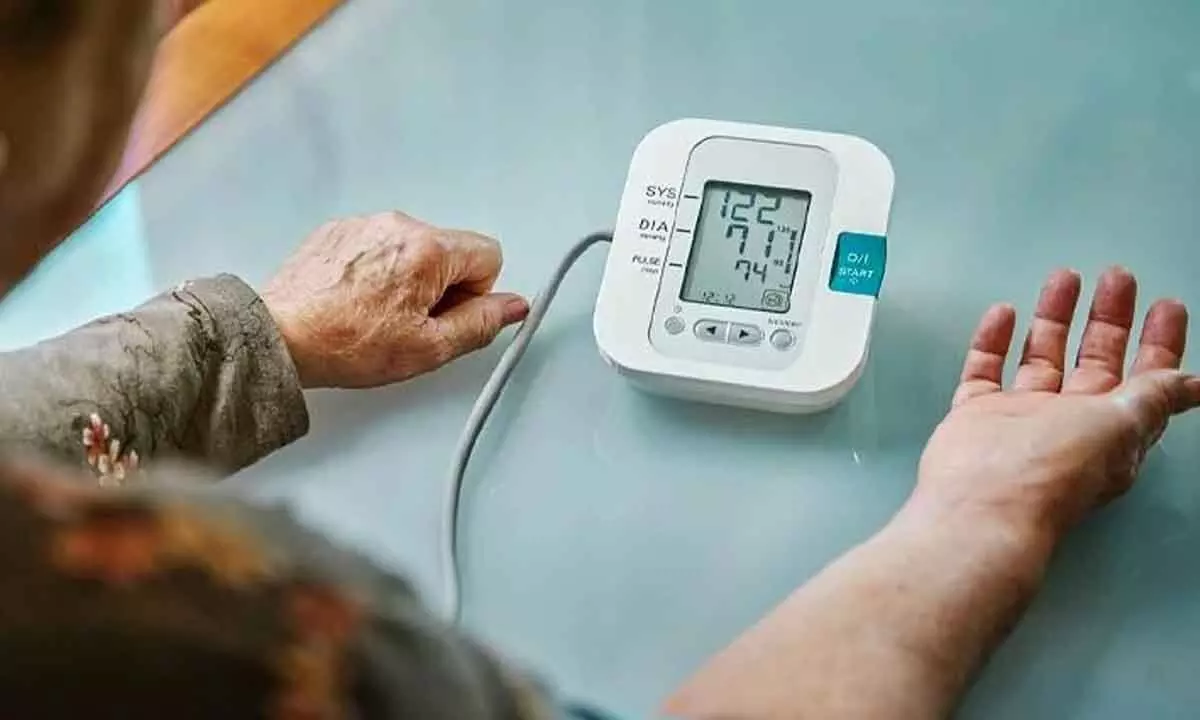Live
- First Star Outside Milky Way Captured: WOH G64 is 2,000 Times Larger Than the Sun
- Sikkim govt to constitute state Niti Ayog: CM Tamang
- CBI books Rajasthan narcotics inspector for Rs 3 lakh bribe
- Rajasthan bypolls: A tough contest between BJP and Congress
- Albania joins SEPA, paving way for EU integration
- Japanese government approves 250-billion USD economic package to ease price pain
- Six pharma companies to set up their units in Telangana
- The Unstable Events of a 17-Wicket Day in Perth: India vs Australia
- Dutch FM's Israel trip cancelled after Netanyahu's arrest warrant
- UK to increase energy price cap by 1.2 per cent
Just In
How to check your BP at home - Find step-by-step guide


Checking your blood pressure (BP) at home can be a helpful way to monitor your cardiovascular health.
Monitoring blood pressure at home allows for better cardiovascular health by keeping track of your heart health without frequent hospital visits. Doctors emphasize its importance for people with hypertension, also known as high blood pressure (BP), as they can keep track of their condition and assess the effectiveness of their treatment.
Here's a step-by-step guide to help you measure your blood pressure accurately:
Step 1: Gather Equipment
Ensure you have the following items:
A digital blood pressure monitor (also known as a sphygmomanometer) should work fine and preferably have a cuff that fits your arm size.
A quiet and comfortable place to sit.
A table or flat surface to rest your arm.
Smartphone, tab or a pen and paper to record the observations.
Step 2: Prepare Yourself
Avoid eating, drinking caffeine, smoking, or exercising at least 30 minutes before the measurement.
Use the restroom if needed.
Sit calmly and relax for around 5 minutes before taking the measurement.
Step 3: Position the Cuff
Place the cuff on your bare upper arm, about an inch above the elbow. Make sure it's snug but tight enough.
The bottom edge of the cuff should be about an inch above your elbow crease.
Step 4: Take the Measurement
Press the "start" button on your digital blood pressure monitor.
The cuff will start inflating. You may feel slight pressure but no pain.
The cuff will gradually deflate. You'll hear a "whooshing" sound as blood flows through your arm.
The monitor will display your BP readings: systolic (the higher number) and diastolic (the lower number). It might also show your pulse rate.
Step 5: Record the Reading
Write down or save the measurements on your smartphone. Include the date and time.
Step 6: Repeat and Average
For accurate results, taking two or three readings a few minutes apart is recommended, and then calculating the average. This helps account for any variations due to factors like stress or movement.
Step 7: Interpret the Results
Consult your healthcare provider for guidance on interpreting your readings. Generally, normal blood pressure is around 120/80 mm Hg. However, optimal blood pressure targets can vary based on individual health conditions.
Step 8: Maintenance and Calibration
Check your monitor's accuracy by comparing its readings with those at your doctor's office.
Ensure to follow the manufacturer's guidelines for cleaning and maintaining your blood pressure monitor.
Important Tips:
Measure at the same time of day for consistency.
Don't talk or move during the measurement.
Sit with your back straight and feet flat on the ground.
Avoid crossing your legs.
Remember, self-monitoring is a useful tool but is not a substitute for regular check-ups with your healthcare provider. They can provide personalized advice and treatment based on your blood pressure readings and your overall health.

© 2024 Hyderabad Media House Limited/The Hans India. All rights reserved. Powered by hocalwire.com






